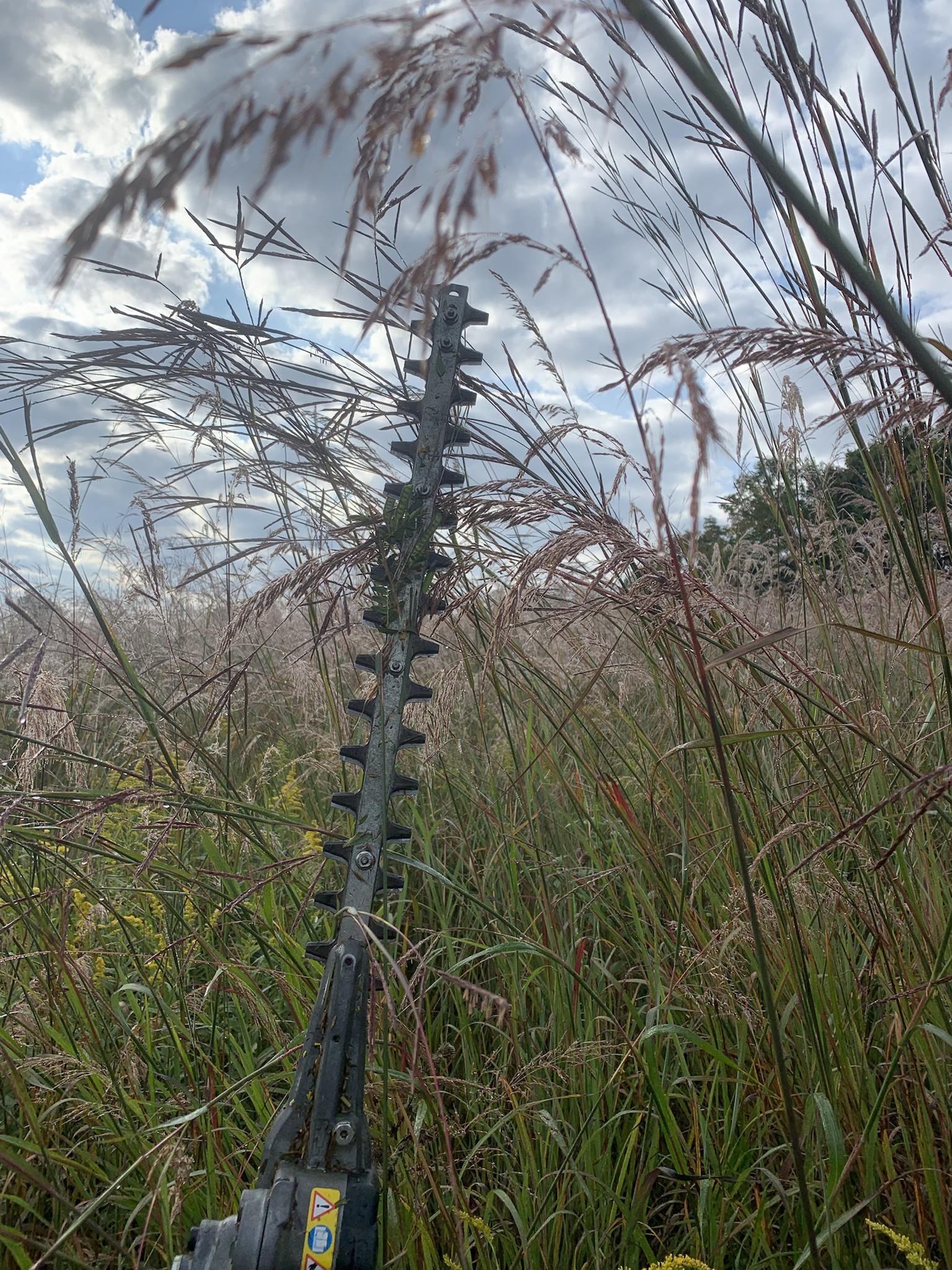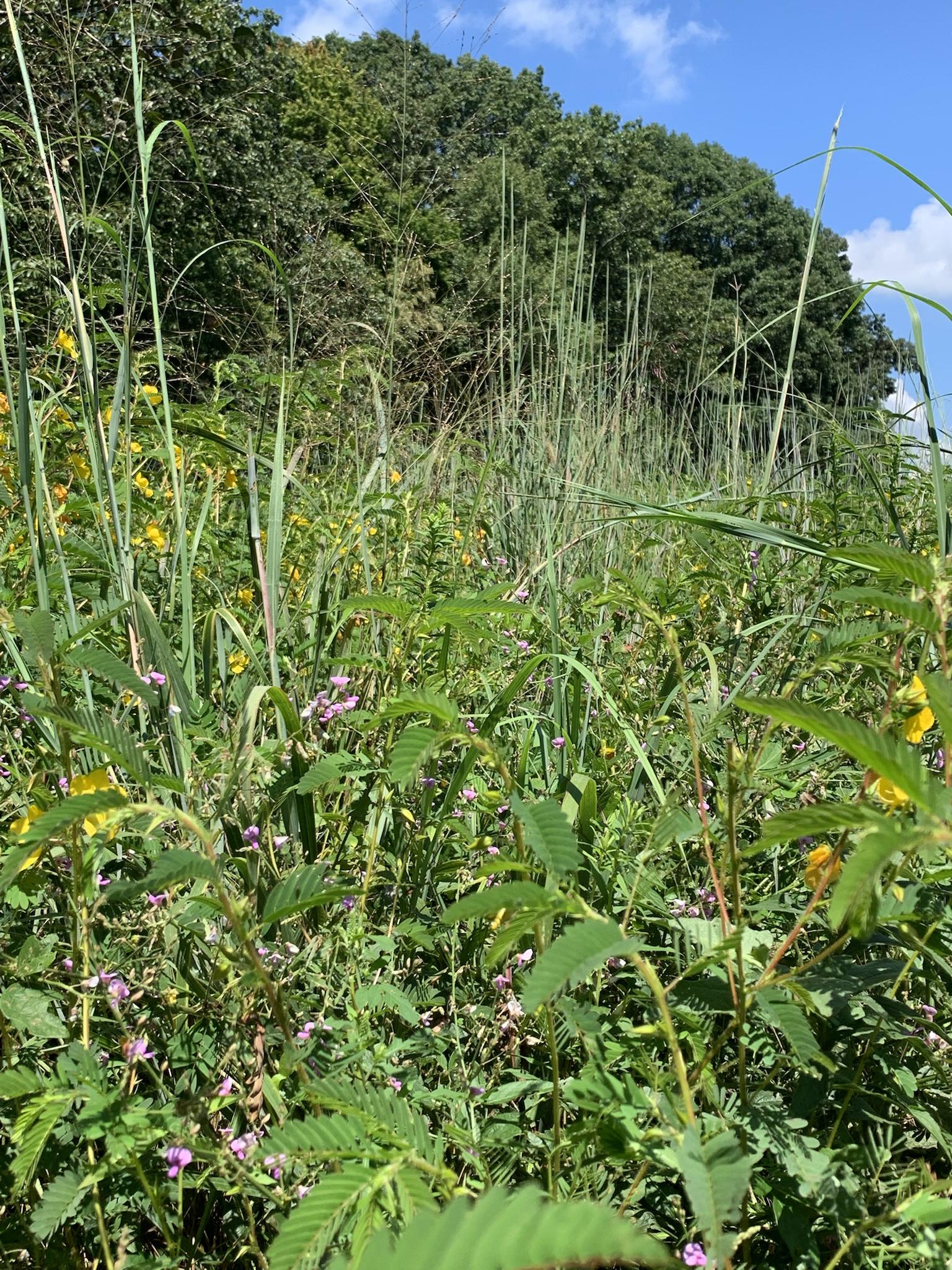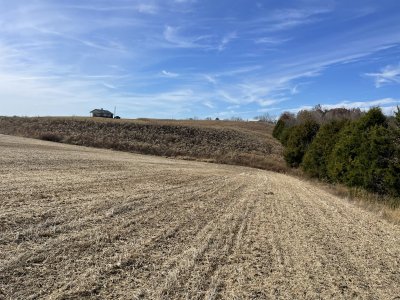Native Hunter
5 year old buck +
I would leave them as much as reasonably possible.If I decide to plot some of the "open" ground, would you leave or remove the cedars?
I would leave them as much as reasonably possible.If I decide to plot some of the "open" ground, would you leave or remove the cedars?
It's the improved variety of Partridge Pea that is sold by Roundstone Native Seeds. They advertise it as growing up to 4 feet tall, but it routinely grows 5 - 6 feet tall in my prairie. The grasses that dominate that particular field are Kaw Big Bluestem and CIR Switch. The switch gets about 7 feet tall and the Big Blue gets about 9 feet tall. I have some other fields that are more dominated by Indian Grass. Our snows are not bad here, and they all stand the winter pretty well. The Big Blue will occasionally flop at a few spots, but mostly stands well too.
Another forb that does great in the tall grasses is smooth ticktrefoil. It's the purple in the second pic below. It's even a more desirable browse than partridge pea. Two other good ones are tickseed sunflower and tall goldenrod.


Native...how do you plant these seeds in SG? Can you broadcast or do you need to till?
Would be curious how you would lay this property out?Bill brings up the key to cedars in his post above. If they get too crowded, the bottom limbs die from lack of sun, and you eventually lose the screening. It's also a thick mess with no food value that deer don't use. However, if they are spaced out to where the bottom limbs keep getting sun, you have what I consider to be the almost perfect screening conifer for most situations where I live.
PS - If it's just one row of cedars with no other shade, they can touch at the bottom and you are fine. It's the cedar "thickets" that end up being what you don't want.
Would be curious how you would lay this property out?
Red areas are the open areas I made this post about. The pastures on the north side will be in a corn/soybean rotation.
Here is drone footage of the place: https://streamable.com/cl72qo
Thank you so much! A couple follow up questions:1. Those areas in red may be your best cool season food plot options since you are going to farm the north. I would plot those areas to the acreage I needed and possibly do switch and forbs on the rest.
2. I would screen as much as possible around property lines anywhere a neighbor might be hunting. It would be nice to even screen on the north if you think it is reasonable.
3. Create trails just inside the perimeter that you can use to access stands based on wind. Learn how deer travel on the land and place stands as needed.
4. Treat the rest as sanctuary. Do maintenance in the spring and stay out the rest of the time.
5. Looks like you have a stream through the middle for water, so that should take care of that.
Thank you so much! A couple follow up questions:
Would you plot around those cedars or take them out?
What are some good options for screening the roads? I was gonna start with annuals like Egyptian wheat. Was thinking about Giant Miscanthus, but worried that herbicide from the crops might drift on it one year and ruin it.
@Bill, @Native Hunter
If those open areas end up having a strong stand of serecia, should I just go ahead burn them down and no till in soybeans this year, or wait and observe a year.
Again thanks for all the help, this is all great.
Agtalk crowd said it's hard to kill in pasture situations but easy to kill in crop situations.
That’s a good plan Dawg. I would consider discing 2-3 passes over it. Will kill some grasses, but forbs come back from seed every year so will stimulate them. You could then do Clethodim in April or May after you see if discing did the trick.In an effort to reduce grasses in an old field/early successional test plot area I was going to experiment this spring. It’s a little area by my cabin so it really doesn’t matter the outcome. I was going to burn asap to get rid of some of the grasses. Once spring green up starts I was going to spray it quickly (as in drive pretty fast over it) with some cleth with the expectation that I will miss some of the grasses so I don’t completely wipe them out. I want some grass but right now it is matted down with grasses and very few forbs.
Good idea. I meant to include that. I was going to adjust the disc to a not aggressive angle and make a pass. The only thing I worry about burning now is possible erosion until green up. Some of it is my pond dam.That’s a good plan Dawg. I would consider discing 2-3 passes over it. Will kill some grasses, but forbs come back from seed every year so will stimulate them. You could then do Clethodim in April or May after you see if discing did the trick.

Def burn in March then. I’ll tell you burning will stimulate grass growth, so could just disc and skip burn this year. Could also burn now and throw our winter rye or ryegrass to keep stabilized. Burning now stimulates forbs, burning in March stimulates grass.Good idea. I meant to include that. I was going to adjust the disc to a not aggressive angle and make a pass. The only thing I worry about burning now is possible erosion until green up. Some of it is my pond dam.
View attachment 48279
Yeah that’s what I’m torn with. Burning now to achieve desired plant response but risk erosion or burn in March and stimulate too many grasses but erosion won’t be a problem…Def burn in March then. I’ll tell you burning will stimulate grass growth, so could just disc and skip burn this year. Could also burn now and throw our winter rye or ryegrass to keep stabilized. Burning now stimulates forbs, burning in March stimulates grass.
The rye or ryegrass would give a little alleopathic effect that could thin the grass a little for you also.
My tall grasses and forbs were all planted at the same time. We did a double gly kill on the existing fescue pasture and drilled the forbs and grasses in together. If SG (switchgrass) was already existing, you would need to thin it a little in my opinion and get the forb seed to some dirt with enough space to germinate and grow. I think that could be done by disking just enough to cause some disruption in the SG. In fact, to bring back forbs when SG gets too thick, disking is something that is usually recommended by the experts. I can see where getting the right amount of disking to reach your exact goal could be a little tricky. You don't want to set the SG back too much - you just want enough space to get the forbs going.